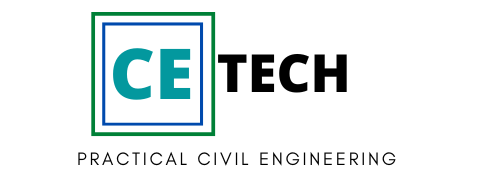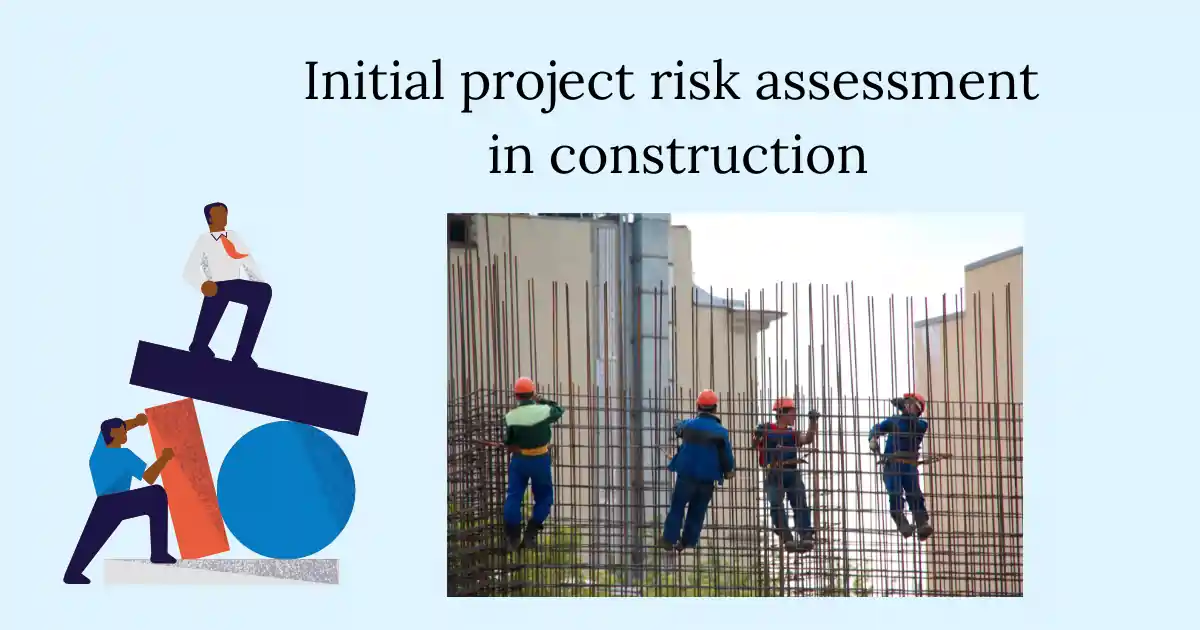Initial project risk assessment is a crucial process in the construction industry. It helps project managers and stakeholders identify potential hazards, evaluate their impact, and develop mitigation strategies. This comprehensive analysis will explore the various aspects of risk assessment in construction projects, including its timing, methodology, key factors, and impact on project outcomes.
Timing of Risk Assessment in Construction Projects
Risk assessment is an ongoing process that should be conducted throughout the entire lifecycle of a construction project. However, there are specific phases where it is particularly critical:
1. Project Initiation Phase: The initial risk assessment should be conducted as early as possible, ideally during the project initiation phase. This early assessment helps identify potential risks that could impact the project’s feasibility, budget, or timeline.
2. Planning Phase: A more detailed risk assessment should be carried out during the planning phase. This assessment helps in developing risk management strategies and incorporating them into the project plan.
3. Pre-Construction Phase: Before breaking ground, another risk assessment should be conducted to identify any site-specific risks or changes in project conditions.
4. Construction Phase: Regular risk assessments should be performed throughout the construction phase to identify new risks that may arise as the project progresses.
5. Project Closure: A final risk assessment should be conducted during the project closure phase to evaluate the effectiveness of risk management strategies and document lessons learned for future projects.
How to Conduct a Risk Assessment for a Construction Project
Risk assessments are conducted according to the project’s documentation standards. A risk assessment template is used to facilitate the process.
Conducting a thorough risk assessment for a construction project involves several key steps:
1. Identify Potential Hazards: This involves a comprehensive review of all aspects of the project to identify potential risks. This can include physical hazards on the construction site, financial risks, scheduling risks, and regulatory compliance risks.
2. Evaluate the Risks: Once hazards are identified, assess the likelihood of each risk occurring and its potential impact on the project. This evaluation helps in prioritizing risks.
3. Determine Risk Control Measures: Develop strategies to eliminate, reduce, or control each identified risk. This may involve changes in project design, implementation of safety procedures, or financial contingency planning.
4. Record and Document: All identified risks, their assessments, and control measures should be thoroughly documented. This documentation forms the basis of the project’s risk management plan.
5. Review and Update: The risk assessment should be regularly reviewed and updated throughout the project lifecycle to account for new risks or changes in existing risk factors.
Key Elements for Effective Risk Assessment
To ensure an effective risk assessment process, several key elements should be in place:
1. Comprehensive Scope: The assessment should cover all aspects of the project, including technical, financial, environmental, and social factors.
2. Stakeholder Involvement: Involve all relevant stakeholders in the risk assessment process to ensure a diverse range of perspectives and expertise.
3. Data-Driven Approach: Use historical data, industry benchmarks, and expert opinions to inform the risk assessment process.
4. Clear Methodology: Employ a consistent and transparent methodology for identifying, evaluating, and prioritizing risks.
5. Integration with Project Management: Ensure that the risk assessment process is fully integrated with overall project management practices.
Factors to Consider in Risk Assessment
When conducting a risk assessment for a construction project, several key factors should be considered:
1. Project Scope and Complexity: The size and complexity of the project can significantly impact the types and magnitude of risks involved.
2. Site Conditions: Geological, environmental, and local factors can introduce various risks to a construction project.
3. Regulatory Environment: Compliance with local, state, and federal regulations can pose significant risks if not properly managed.
4. Financial Factors: Budget constraints, funding sources, and market conditions can all impact project risks.
5. Technology and Innovation: The use of new or complex technologies can introduce additional risks to a project.
6. Supply Chain and Resource Availability: Risks related to material and labor availability should be carefully assessed.
7. Stakeholder Management: Risks associated with stakeholder expectations, communication, and engagement should be considered.
8. Health and Safety: Occupational health and safety risks are paramount in construction projects and require thorough assessment.
Construction Site Visit Risk Assessment
A site visit risk assessment is a crucial component of the overall project risk assessment. It involves:
1. Physical Hazard Identification: Identify potential hazards such as uneven terrain, overhead power lines, or unstable structures.
2. Access and Egress Evaluation: Assess the safety of entry and exit points to the site.
3. Environmental Factors: Consider weather conditions, noise levels, and potential exposure to hazardous materials.
4. Equipment and Tool Assessment: Evaluate the risks associated with the use of construction equipment and tools on site.
5. Worker Behavior Analysis: Assess risks related to worker behavior, including potential for human error or non-compliance with safety procedures.
Impact of Risk Assessment on Project Outcomes
Effective risk assessment can significantly impact project outcomes in various scenarios:
1. Cost Management: By identifying potential financial risks early, project managers can implement mitigation strategies to prevent cost overruns.
2. Schedule Adherence: Risk assessment helps in identifying potential delays, allowing for proactive scheduling adjustments.
3. Quality Assurance: By identifying risks that could impact construction quality, appropriate quality control measures can be implemented.
4. Safety Performance: Thorough risk assessment contributes to improved safety performance, reducing accidents and associated costs.
5. Stakeholder Satisfaction: Proactive risk management based on comprehensive assessment leads to smoother project execution and higher stakeholder satisfaction.
Evaluating Risk Assessment Using Risk Assessment Template
A risk assessment template often uses a scale to evaluate both benefits and risks. Here’s how to interpret and use this scale:
1. Benefit Scale (Note: scale is reversed):
– 0: No Benefit/Dis-benefit
– 1: Benefit is intangible or not quantified / project focused on ‘keeping the lights on’ / project focused on reducing technical debt
– 2: Quantifiable improvement in one or more strategic KPIs over next 2 years and/or moderate demonstrable sales opportunity
– 3: Significant quantifiable improvement in one or more strategic KPIs in-year and/or large demonstrable sales opportunity
2. Risk Scale:
– 0: No Risk
– 1: Low Risk
– 2: Moderate Risk
– 3: High Risk
For each risk category, evaluate the level of risk based on the provided criteria and assign a score from 0 to 3. The average risk score is then calculated across all categories.
Risk Categories and Their Interpretation
The following are risk categories that are enumerated in the risk template each with specific criteria for evaluation:
1. Clarity of Scope: Assesses how well-defined and stable the project requirements are.
2. Stakeholders / Reputation: Evaluates the complexity of stakeholder management and potential reputational impacts.
3. Technology: Assesses the complexity and novelty of technology used in the project.
4. Dependencies: Evaluates the project’s reliance on external factors or other projects.
5. Resource Requirements: Assesses the availability and specialization of required resources.
6. Supplier Maturity: Evaluates the reliability and track record of project suppliers.
7. Commercial: Assesses the complexity and stability of commercial agreements.
8. Remaining Duration: Evaluates the project timeline and potential for delays.
9. Embedding into Service: Assesses the complexity of integrating the project outcomes into existing operations.
Correlating Benefits and Risk in Risk Analysis
The correlation between benefit and risk is a crucial aspect of project evaluation. risk assessment template uses a quadrant approach to visualize this correlation:
1. Low Benefit/Low Risk: Projects in this quadrant may not be prioritized due to limited potential returns, despite low risk.
2. High Benefit/Low Risk: These are ideal projects, offering significant benefits with minimal risk.
3. Low Benefit/High Risk: Projects in this quadrant are generally avoided unless there are compelling reasons to proceed.
4. High Benefit/High Risk: These projects require careful consideration. The high potential benefits must be weighed against the significant risks involved.
By plotting projects on this benefit-risk spectrum, decision-makers can prioritize projects that offer the best balance between potential returns and acceptable risk levels.
In conclusion, initial project risk assessment is a critical process in construction project management. It requires a systematic approach, consideration of multiple factors, and ongoing evaluation throughout the project lifecycle. By effectively assessing and managing risks, construction projects can improve their chances of success, ensuring they are completed on time, within budget, and to the required quality standards while maintaining a safe working environment.

